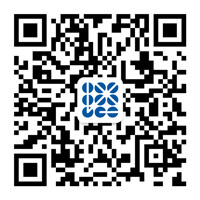Contents
Once, I heard a mythological story where all people around the world spoke the same language. They decided to build a tower that reached the sky to showcase their strength and achieve eternal fame. However, their actions angered God, as humans were too proud, attempting to challenge heaven with their own power. As punishment, God made people speak different languages, making them unable to understand each other, thus halting the tower’s construction. Consequently, people scattered across the globe, forming different languages and cultures. This is the story of the Tower of Babel from the Bible. It’s often interpreted as a mythical explanation for human linguistic diversity, but it also reflects deep contemplation on human cooperation, pride, and division. So, the story of human imagination and AI has begun.

The Story of the Tower of Babel: Human Aspirations and Dreams
The Importance of Human Language as a Tool for Connection
The Tower of Babel story is a powerful parable about human communication, unity, and division. It reveals the significance of language as a tool for connection while also highlighting the chaos and disagreements that can arise from communication failures. To some extent, this story reminds us that although cultural and linguistic diversity enriches human life, they can also be obstacles to understanding and cooperation.
In today’s globalized world, the lesson of the Tower of Babel remains relevant. We continuously seek to overcome language and cultural barriers through technology and education, fostering understanding and cooperation among people from different backgrounds. Despite challenges, human society has made significant progress by sharing knowledge, cultural exchange, and technological innovation, building a more connected global community.
Furthermore, this story inspires us to maintain a humble and open mindset, recognizing that no matter our achievements, we should cherish mutual understanding and cooperation among humans.
Bridging Human Imagination and AI: From Babel to Global Collaboration
Indeed, the Tower of Babel story provokes deep reflection, especially considering modern technologies like AI and machine translation that seem to realize the ancient myth’s unachieved ideals of communication. Such technological advancements are indeed narrowing linguistic gaps and promoting global communication and understanding. However, they also raise profound questions and considerations.
- Firstly, regarding whether ancient people could have imagined such advanced communication technologies, we might consider human imagination and future envisioning as boundless. Ancient cultures were filled with prophecies and dreams of flying, remote communication, and other technological wonders that seemed impossible at the time but have become reality today. The Tower of Babel story might reflect humanity’s limitless desire for communication and optimistic expectations for technology to overcome natural barriers.
- Secondly, whether the Tower of Babel event truly occurred falls more into the realm of religion and myth than historical fact. There is no concrete evidence to suggest that this event actually happened. The story is more likely a symbolic narrative used to explain the diversity of languages and convey moral lessons.
- Lastly, although modern technology, especially AI, offers unprecedented convenience for cross-linguistic communication, it also reveals other aspects of communication, such as cultural differences, emotional expression, and deep understanding, that pure language translation cannot fully address. This means that despite significant technological progress, true understanding and communication among humans still require more effort and in-depth cultural exchange.
The Emergence of AI
Open AI was founded in 2015 and has since been a pioneer in artificial intelligence research and application. It offers a variety of tools and platforms that enable researchers and developers to leverage the latest AI technologies. For instance, the GPT-3 model by Open AI, initially released in 2020, has seen continuous updates to its platform and API services, allowing more developers and creators to access and utilize this technology. Additionally, Open AI has released other significant technologies and applications, such as DALL·E, an advanced image generation model, and Codex, a model capable of understanding natural language and generating code.
Open AI, through its APIs and other services, indeed provides a broad user base with a platform for interacting with and creating through AI, highlighting that “AI is open.” These services enable people to directly experience the powerful capabilities of AI, whether in language comprehension, content creation, or other areas.
Therefore, although Open AI itself was established in 2015, it has continued to open up to the public with updated services and technologies in 2022 and beyond, constantly expanding its support for and inspiration of human imagination and creativity.
The Differences Between AI and Humans
Doubts about the impossibility of AI’s emergence could involve several aspects, including technological challenges, philosophical issues, and the fundamental differences between artificial intelligence (AI) and humans. Historically, many questioned whether AI could achieve the potential of human intelligence, focusing on:
- Technological limitations: Early on, the computational power and storage capacity were far from supporting complex AI algorithms and large-scale data processing, leading many to doubt whether AI could achieve complex thinking and learning abilities.
- Cognition and emotion: Human cognitive abilities include not just logical thinking but also emotions, intuition, moral judgments, and other complex psychological processes. Many question whether machines could truly understand and simulate these non-logical human traits.
- Consciousness issue: This might be one of the core issues you mentioned. The essence of human consciousness and self-awareness has been a long-standing challenge in philosophy and science. Some question whether AI could possess true “consciousness” or have “self-awareness” like humans.
The Future of Human Imagination and AI Collaboration
As time has progressed and with technological advancements, especially with breakthroughs in deep learning and big data technologies in recent years, Open AI has achieved remarkable successes in many fields, such as natural language processing (NLP), image recognition, gaming, etc. The emergence of models like GPT (Generative Pretrained Transformer) has demonstrated Open AI’s powerful capabilities in understanding and generating human language.
However, despite significant technological progress, the fundamental differences between humans and AI persist. AI’s “intelligence” is based on data, algorithms, and computational power, lacking human emotions, intuition, moral concepts, and true consciousness and self-awareness. AI can simulate and perform specific intelligent tasks, but it does not “understand” the real meaning of these tasks, nor does it have human experience and emotions.
Therefore, although the development of Open AI technology has brought significant changes and conveniences to human society, the fundamental differences between humans and AI remain a deep consideration as we continue to develop and apply AI technology.
Human Imagination
The story of the Tower of Babel and the development of modern technology remind us that, although we can reduce communication barriers through technology, the real understanding and connection between each other are built on the foundation of empathy, cultural exchange, and deep understanding. This is perhaps a topic we should ponder deeply while pursuing technological progress.
Human imagination is a unique and powerful ability that allows us to conceive of things that do not exist, create new concepts, explore possibilities, and even transcend the current physical limitations in spirit. This ability is indeed rare in the natural world, and, at least based on our current knowledge, humans are unique in their use of complex symbolic thinking and creative imagination.
Regarding the relationship between imagination and human evolution, many theories believe that imagination is a key driving force behind the development of human society, culture, and technology. Imagination not only allows us to plan for the future and solve problems but also serves as the foundation for innovation and artistic creation. From an evolutionary perspective, the ability to foresee future events and strategize accordingly is advantageous for survival and reproduction. This ability enables humans to cooperate within complex social structures, develop tools and technology, and adapt to environmental changes.
Furthermore, imagination is also an important component of human cultural and linguistic development. Through language, we are not only able to communicate about things that have actually happened but also share and construct nonexistent concepts and stories, further promoting social cohesion and cultural diversity.
Conclusion
With human imagination and the aid of AI, we have reason to believe that the future world will be a more vibrant and interconnected place. Overall, imagination truly is a unique and precious treasure of humanity, playing a central role in our evolution, survival strategies, and the construction of societies and cultures. As for AI, although we can simulate certain creative processes, the true source of imagination and creativity, the ability to create something from nothing and transcend the boundaries of reality, remains uniquely human.
At the same time, AI finds it difficult to comprehend what dreams are, something only humans can grasp. Therefore, I do not believe that AI can replace humans. That is to say, even though AI is immortal; or to put it another way, even though AI possesses a unique consciousness, it cannot substitute for humanity. Humans’ transient existence in the universe, life endure immortality!
Published by: Mr. Leo Mao. You are welcome to share this article, but please credit the author and include the website link when doing so. Thank you for your support and understanding.


